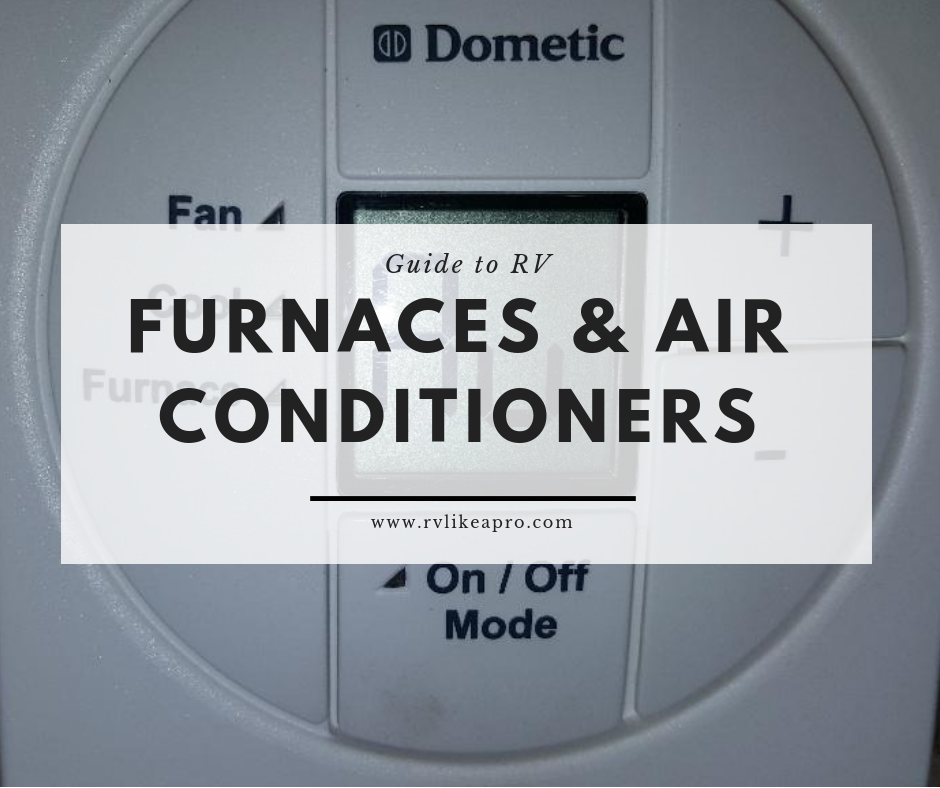
Guide to RV Furnaces and Air Conditioners
Let’s start this out by saying RV furnaces and air conditioners work very similar to the ones in most houses. They have a thermostat, just like in a home, and you are able to set the room temperature how you like it. There are, however, a couple of differences between an RV furnace and the furnace in your home. The first difference is that an RV furnace heats using propane instead of natural gas. The second difference is that the fan motor on an RV furnace operates on the 12 volt battery that is mounted on the front end of the RV (we will stress the importance of this battery in a minute). The furnace will operate off the battery when it is not plugged in. While you are plugged in to 110 power, your converter will change the power from 110 to 12 volt.
Here are some tips for using your RV furnace and air conditioner.
Propane/LP
Many RV appliances run on propane or LP. These appliances include: the furnace, water heater, refrigerator and stove. Because the propane tanks are usually located in the front of the RV there may be a long distance between the appliance and the propane tank. For this reason, it is a good idea to “prime your gas lines”. This is very simple. To “prime your line” just means before you try to turn on any of your propane appliances, first open your tank (make sure you have propane in it), then go light your stove top. By lighting your stove top, it ensures you have propane all the way through your gas lines. This helps to make sure that your appliances will light on their first attempt at lighting. The furnace, water heater, and refrigerator will only try to light for about 30 seconds. After the 30 seconds, if they failed to light, they give up. To have the appliance retry to light you will need to shut the appliance off for a couple seconds then turn it back on. That will reset the igniter and the appliance will try to relight using propane again.
Thermostats
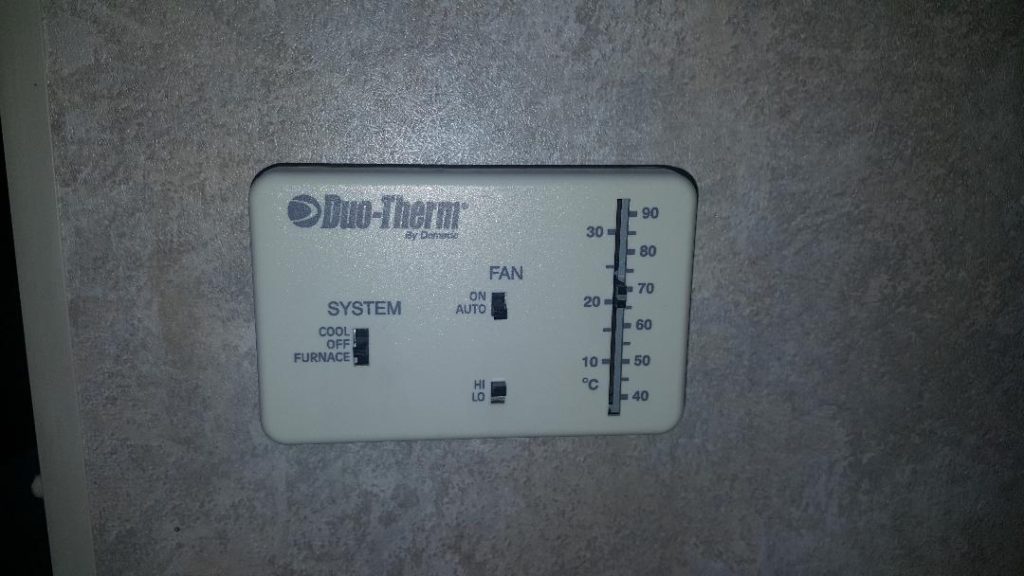
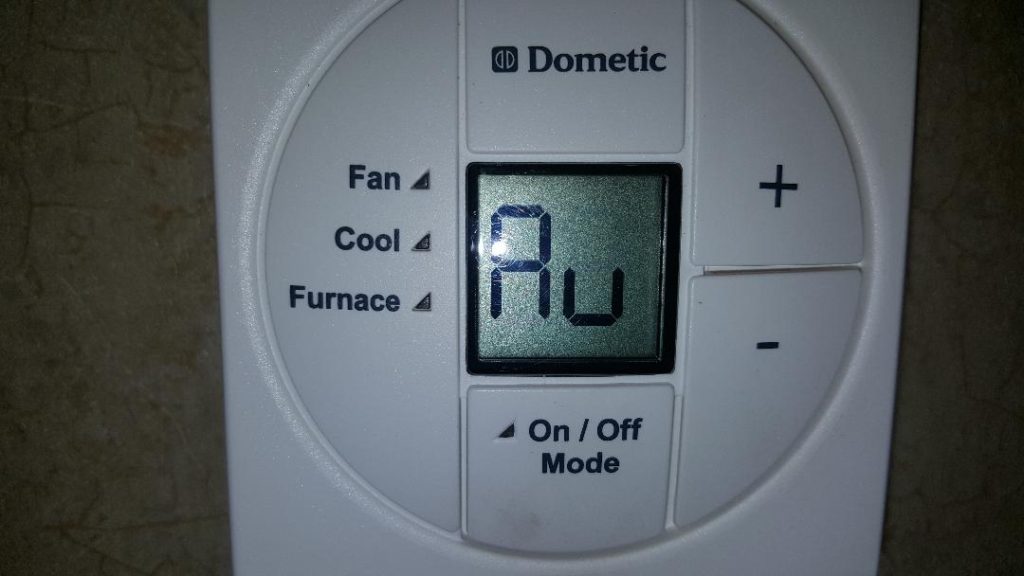
Just like in homes, there are many different kinds of thermostats. Even more are being designed as you read this. In a nutshell, what you’re going to want to do is adjust your thermostat until you get it to furnace mode,or heat mode, or see a little flame in the LED panel (depending on the make and model of your thermostat). The next thing you should do is look at the temperature indication on your thermostat. The temperature should be set to a higher temperature than what the current room temperature is. With the temperature set higher on the thermostat than the temperature in the room, your furnace should attempt to light. You should hear your fan motor running as it will come on to ensure that there is air flow. Air should then come out of the floor vents. Shortly after that you might hear the igniter clicking (sometimes the igniters are quiet) and the main burner should light. Now you can adjust the temperature on your thermostat to your desired room temperature. Heat will come out of the floor vents or wall vents.
Once the air temperature in your room reaches the temperature that you have set the thermostat to, the furnace will shut off. First the gas valve will shut, then the fan will continue to run for about another minute or so to cool itself down. Whenever the thermostat calls for the heat to come on again, the furnace will automatically reignite. Just like the one in your house.
The thermostat may also control your air conditioner, depending on the model of your air conditioner. Some air conditioners operate just on the knobs that are located on the air conditioner unit itself. This is the same difference between a home that has central air and one that has a window or wall unit air conditioner. If the thermostat controls your air conditioner, you will notice that there is a spot to operate fan only. This is the fan that is located in your air conditioner. If it’s a nice day and you don’t want to have your air conditioner on but you want to have some air moving in your RV turn the thermostat to Fan and the ceiling fan will come on and draw air in past the filter and move it out your ceiling vents.
Some thermostats give the option to have your furnace on (remember the heat comes out of the floor) and your ceiling fan on. This will moving air around your RV to circulate the heat better. In order to do this, do the following: First, turn on your furnace. Once your furnace is operating, quickly scroll through the thermostat screens to Fan. Next, change the fan settings to high or low. Then quickly go back to the furnace setting. Your Furnace should continue to run and you should hear your roof vent turning on to circulate air. Note: this is not your air conditioner fighting with your furnace (you would not believe how many calls I have received from confused customers).
The fan can be noisy though. If you don’t want to hear that extra noise of your ceiling fan on, simply adjust your fan speed on your thermostat to auto. With your fan speed set to auto the ceiling fan will only come on when the air conditioner is on and the thermostat is calling for the air conditioner to cool. That being said, at night it can be disruptive to have the fan turning on and off. A better option for sleep is to keep the fan on auto, low or high to your liking. Then, when the thermostat does call for air it will just turn on the air conditioner and you won’t really hear any change to wake you up.
Seeing this all written out it seems like a lot. It’s really not. Just remember these simple steps:
- Open your propane tank and light your stove top.
- Adjust the thermostat to furnace mode.
- Set the temperature to your desired room temp.
Your furnace will do everything else.
Maintenance
Once a year I blow air into my furnace exhaust with an air hose to blow out insects, rust, animals, or their debris. I’ve had seen a number of things get blown out during this process including several Mouse nests and even a bat. It is important to clean this area out because I have even known mice nests to catch fire.
There is also a terrible little Hornet called a Mud dauber. Mud daubers take mud from outside and fill your furnace full of it making nests. Mud daubers are located all over the United States. If a Mud dauber finds your camper it will fill your furnace with enough mud to clog it in about a week. There is a screen available for your furnace called a mud dauber or insect screen. I highly recommend it. If a Mud dauber plugs up your furnace and a service tech has to remove your furnace clean it and reinstall it you’re looking at about $300.
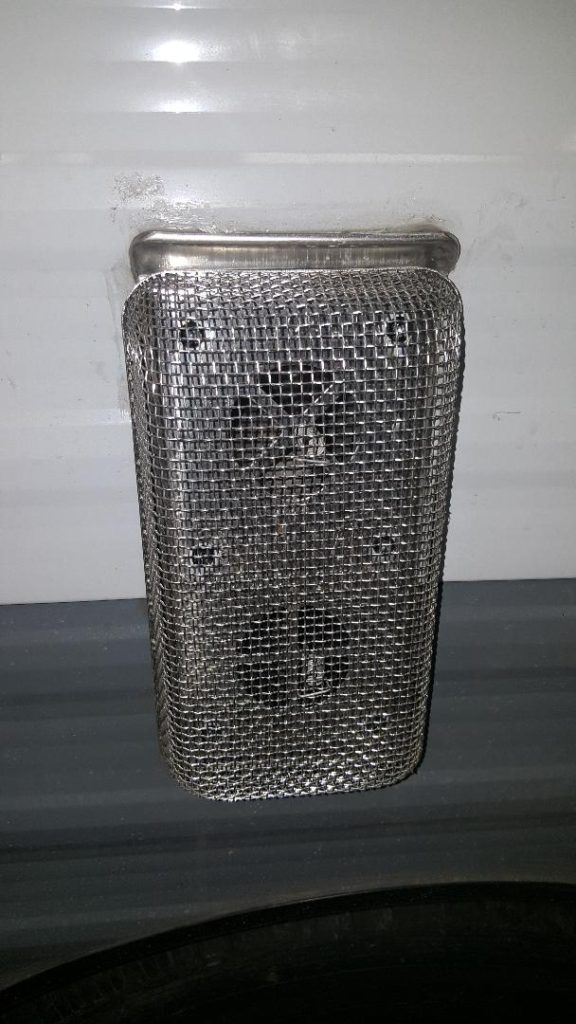
Happy camping!


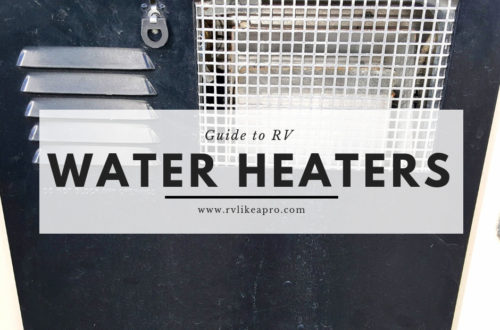

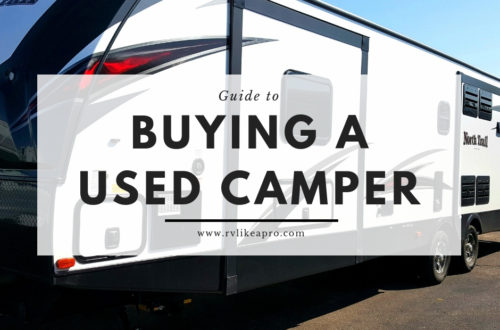
28 Comments
Annick
Good reminders even with those of us with houses.
Shirley
I lived in an RV for five consecutive summers so I know RV owners cannot neglect these appliances. Thank for the tips!
Kirsten
Great advice! Maintenance is key!!
Tricia Snow
Nothing worse than being stuck in a hot RV with no AC! Thank you!
Nicki
You are right!
Pam
I’m not terribly handy at this type of thing, but you make it sound very doable! Thanks for sharing.
Nicki
Thank you so much!
Janine
Such great tips! Particularly about the maintenance, which is something I feel a lot of people overlook.
Holly
Great post! Followed you! JUst love your blog
Val Breeze
We have a pop up with an A/C unit and we are trying to figure out what we need to do to winterize and protect it, so thank you for this article. Great website.
Nicki
Thank you! Thankfully you don’t really have to do anything to the A/C unit to winterize it. Our article next week is all about winterizing. Please check back then!
Margi
I found this super helpful and empowering for me, since I usually leave the heating and cooling to my husband. We love our little pop-up camper!
Shar
Thank you for the helpful information! I am definitely not handy but I could maybe take a crack at this 🙂
Maria
Great article. I’m really interested in RV life.
Dawnmarie
It is unusual to read a post about functionality and maintenance of an RV. This is a blog that I would utilize as a helpful tool!
Nicki
Thank you so much!
Mary
Very informative! I’d love to own an RV and travel, and your blog will be a great help in learning all I need to know!
Nina
Loved this, great tips and you really covered a lot without being too overwhelming!
T.M. Brown
Hubby has considered the whole RV thing later in life – this is obviously a good reminder of things that will have to be taken into consideration if we ever do!
Deanna
Excellent information for those with an RV. Great maintenance tips!
Ashley Reese
I’m sure these are very important parts of RVs, but I bet it’s probably overlooked until it becomes necessary to use (which might be too late!). It’s better to be prepared. This is such good information!
Christa
Preventative maintenance is so important, especially if you’re going to be on the road. This has lots of great reminders.
kathy
I like articles that explain things that I don’t understand. Thanks for writing it.
Kathryn at QuestFor47
Such great resources! I love how in-detail you go into this! I would have never known there was so much to this part of RV-ing
Brandi
Wow. so much to know. We don’t own an RV but if we did, knowing this would be super helpful.
Amanda
Great info! I didn’t know this much went into owning an rv!
Jamie Hill
I am really having a rough time. My first year in a camper and my a.c. quits working.i mean I get air flowing through it it’s just not cold. I replaced my thermostat thinking that may be the problem but no it still doesn’t blow cold air. And I can’t figure it out. Does anyone know or can tell me what to check to find out? South Carolina is very hot and it’s not even summer yet…. Thanks
Nicki
No real way to know without seeing it. Sorry. It sounds like you may need to replace the AC unit. Best to take it to an RV repair shop.